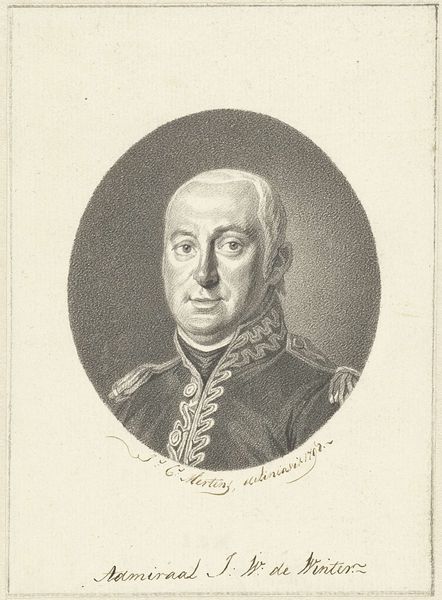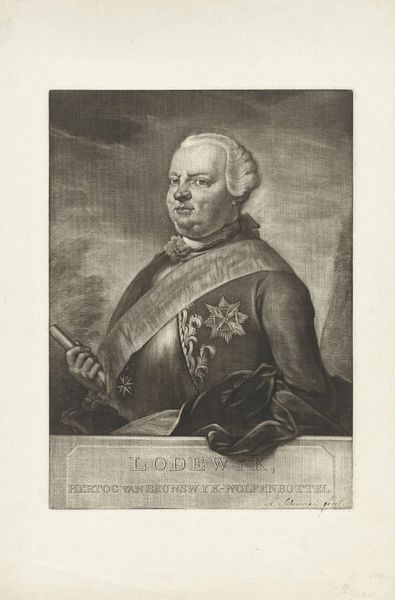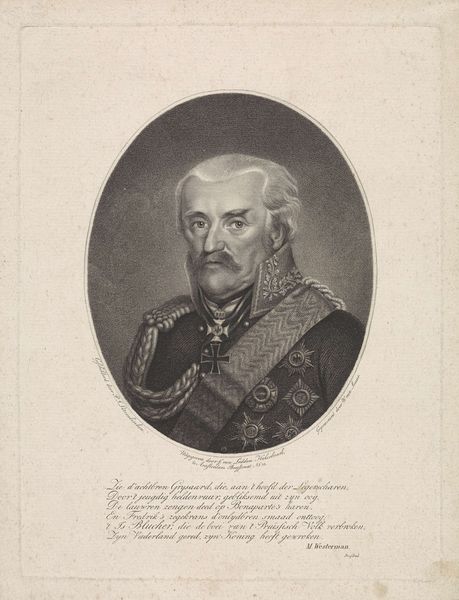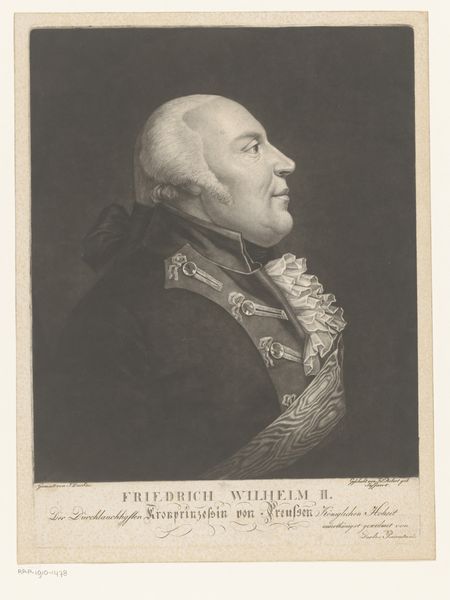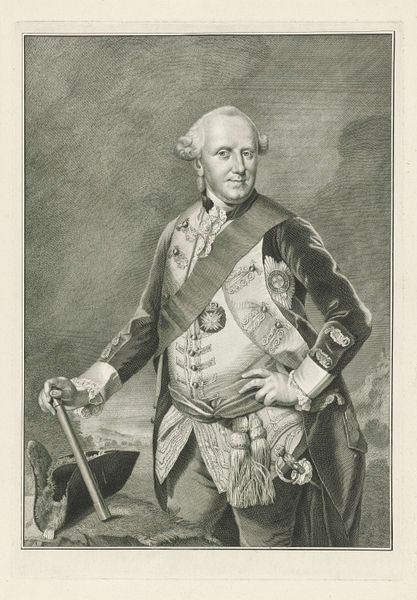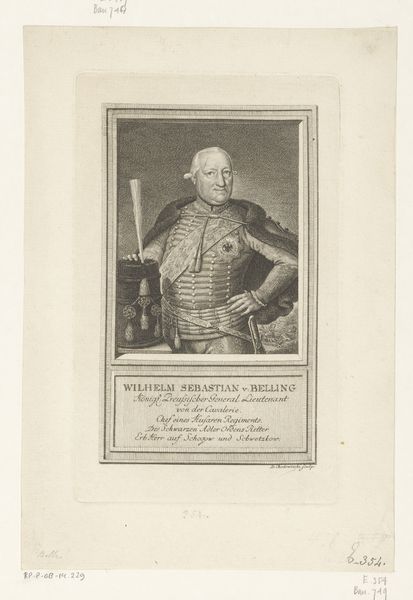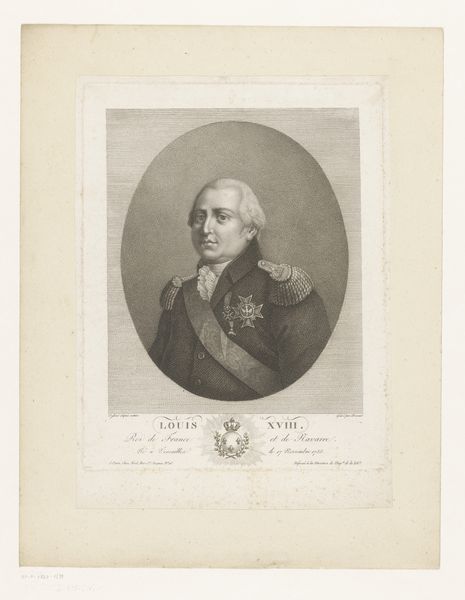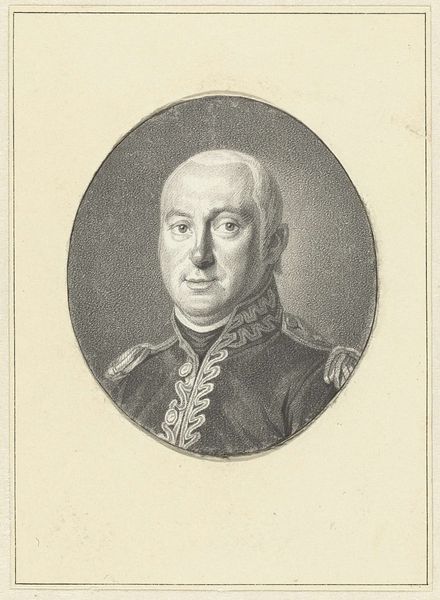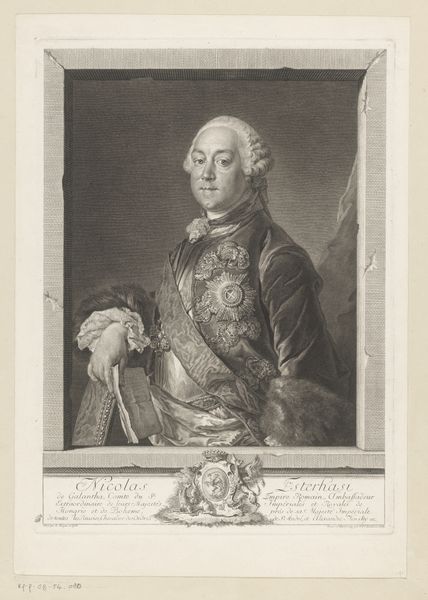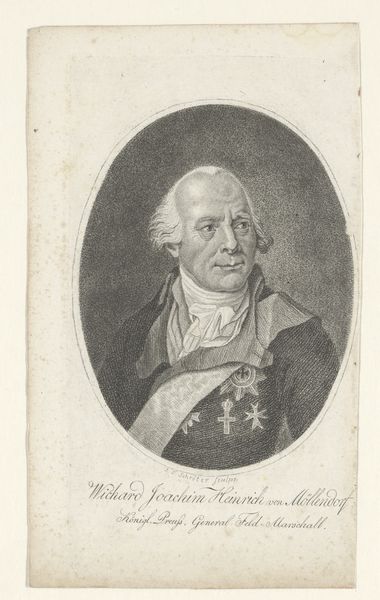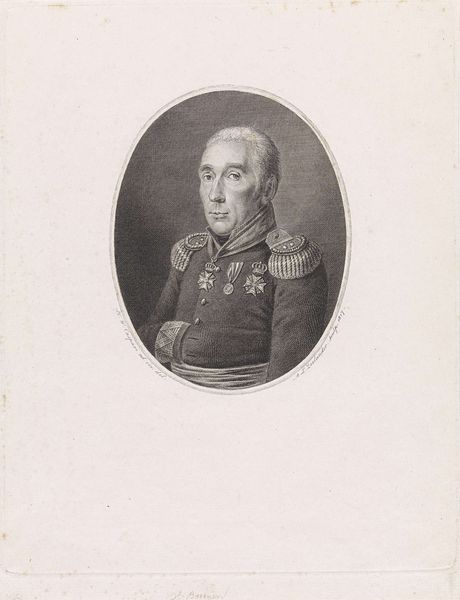
Portret van Willem van Beieren, hertog van Gelnhausen 1799 - 1834
0:00
0:00
ernstkarlgottliebthelott
Rijksmuseum
print, engraving
#
portrait
#
neoclacissism
# print
#
historical photography
#
19th century
#
history-painting
#
engraving
#
realism
Dimensions: height 315 mm, width 218 mm
Copyright: Rijks Museum: Open Domain
Editor: So this engraving, "Portrait of Willem van Beieren, hertog van Gelnhausen," created sometime between 1799 and 1834 by Ernst Karl Gottlieb Thelott. It’s strikingly…stately, wouldn't you say? What do you see when you look at this piece? Curator: Well, beyond the imposing figure of Willem, I see a carefully constructed representation of power deeply embedded in its historical and social context. Consider the Neoclassical style; it's not just about aesthetic preferences. Editor: Right, the sort of…rigid order of it all. Curator: Exactly. Think about what Neoclassicism *meant* in the late 18th and early 19th centuries: a deliberate revival of classical antiquity tied to ideas of order, reason, and civic virtue. So why choose *this* style to depict a Duke? Editor: Maybe to connect him with those virtues, suggesting he embodies those qualities? Is that something rulers used to deliberately influence the public's perception of them? Curator: Precisely! This print serves as a form of propaganda. Notice how his gaze directs beyond the viewer, like he looks at a bright future for all, plus he is bejewelled with so much regalalia that there can be no mistake as to his importance! The political messaging here isn't subtle: it says this is a capable leader with your best interests at heart! Also notice this print exists! Consider it was for mass consumption and helped reinforce a particular image of the aristocracy among the broader populace. What do you think of that? Editor: It is unsettling when you frame it as propaganda! It makes you wonder how much these images reflect reality and how much they construct it. It sounds like art can actively shape cultural perceptions, doesn't it? Curator: Absolutely, it reflects the needs and ideology of its patrons, especially public art such as portraits and engravings. Thank you, this makes one think a bit. Editor: And I better understand now the political role of images in shaping the Duke's persona in a rapidly changing world.
Comments
No comments
Be the first to comment and join the conversation on the ultimate creative platform.
